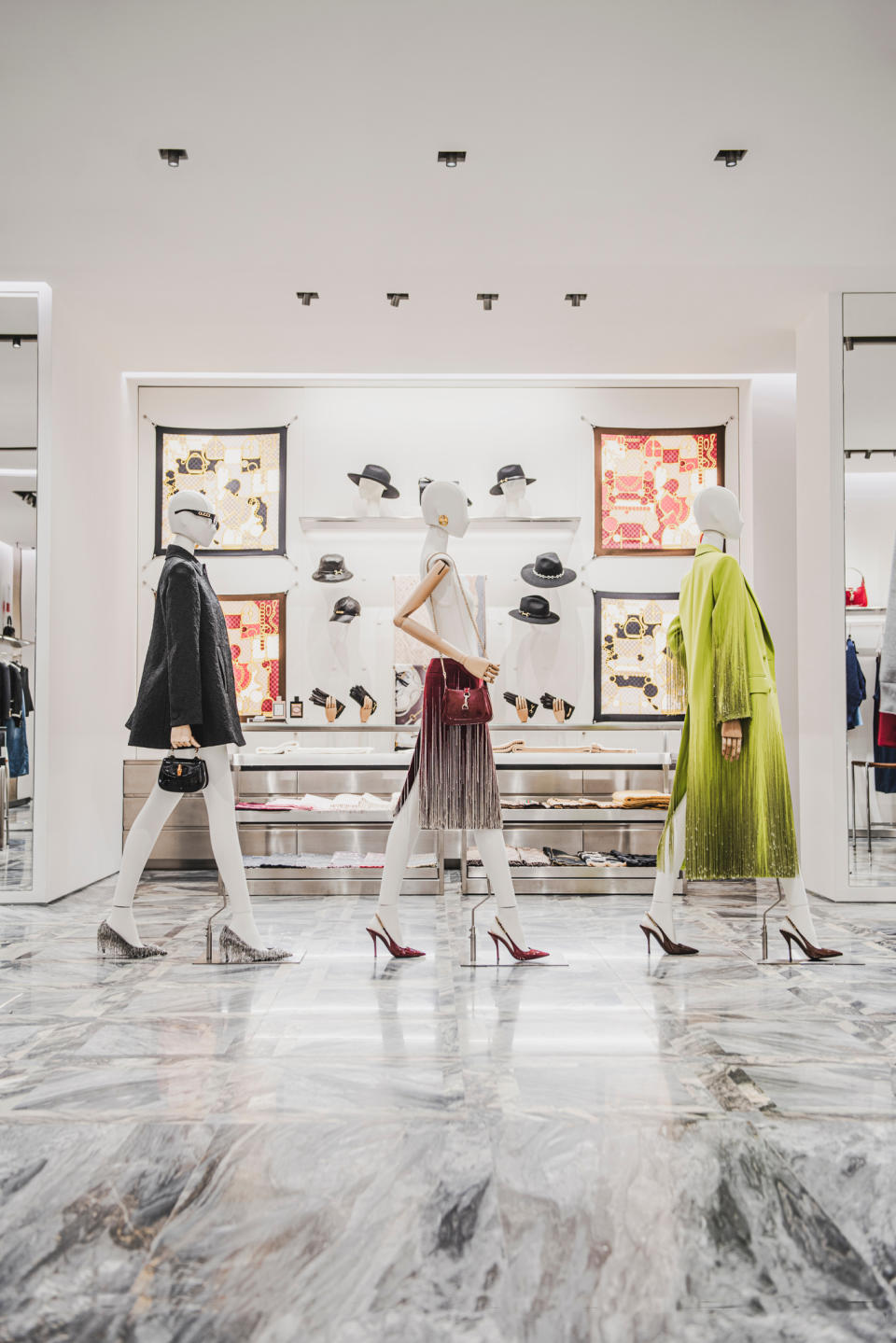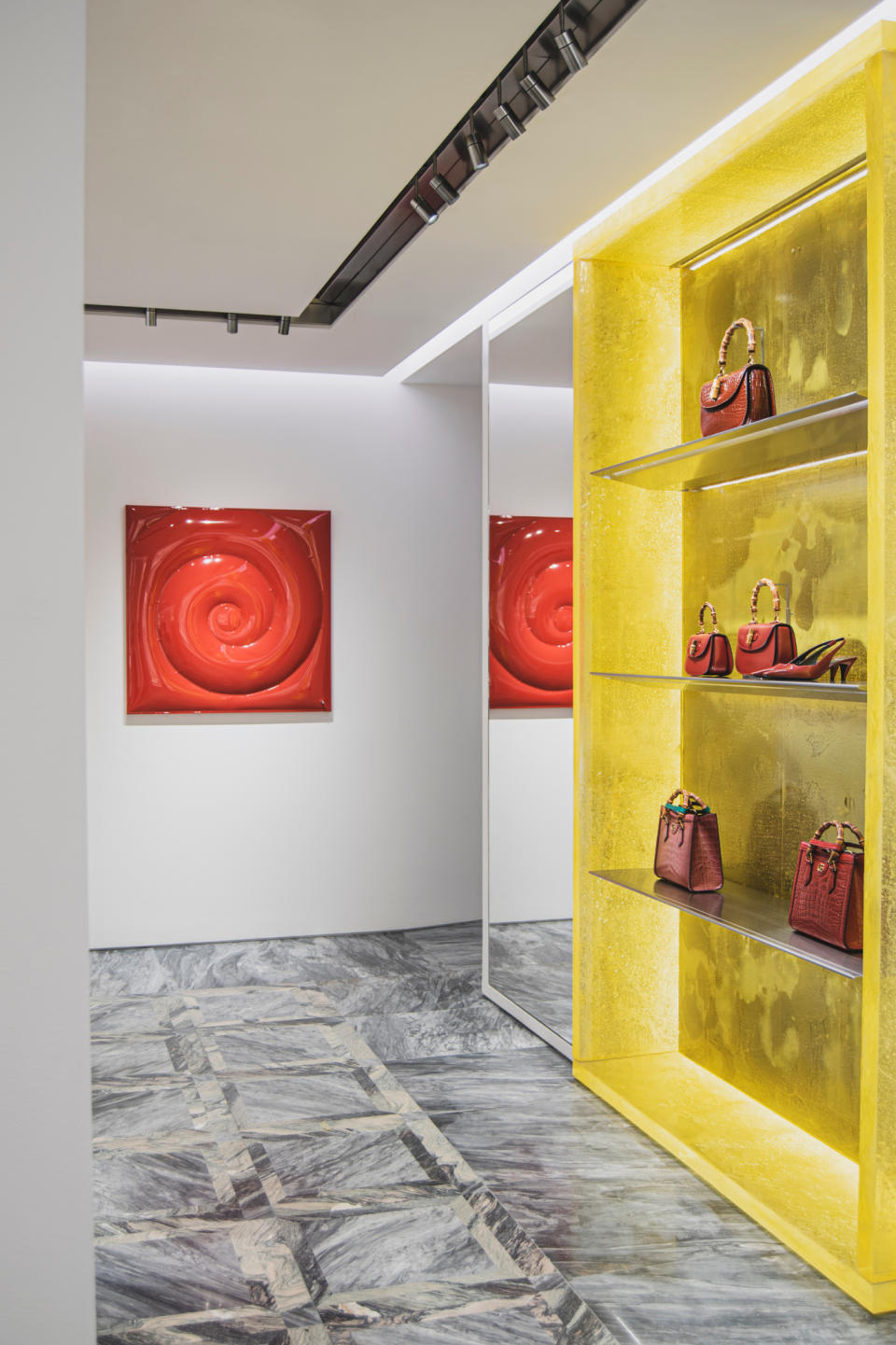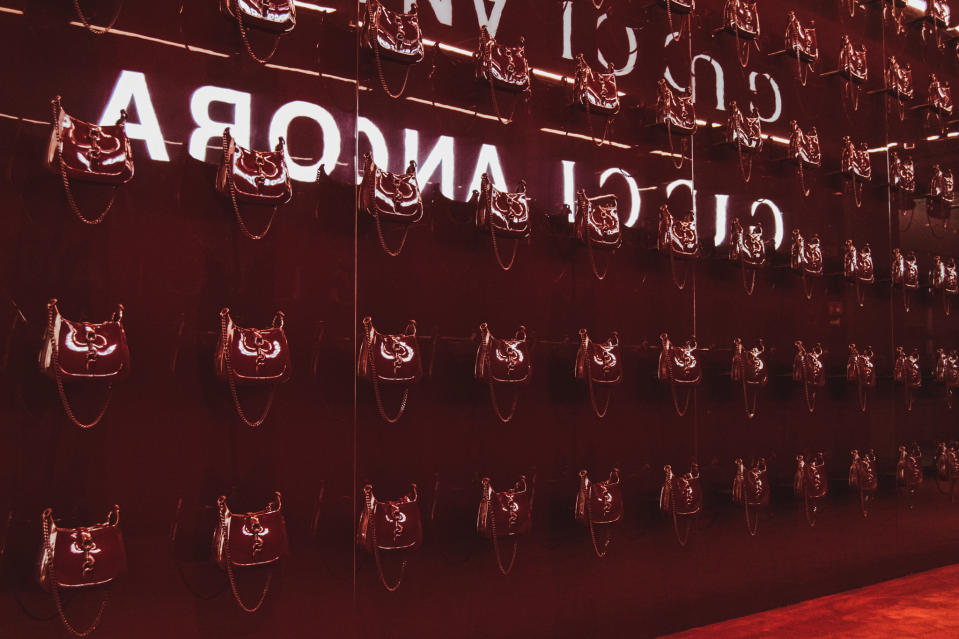Gucci’s Renovated Milan Boutique Is an Ode to Italian Creativity, Craft, Design

MILAN — Gucci’s renovated store in Milan’s Via Montenapoleone 5 is an ode to the city and to Italian creativity and design.
While the flagship does not yet fully reflect the vision of new creative director Sabato De Sarno, his influence is clearly visible and marks a decisive departure from his predecessor Alessandro Michele’s store concept. The store is an evolution that shines the light on the product and further elevates the luxury perception of the brand.
More from WWD
The store “invites our clients to embark on a beautifully tailored experience, showcasing the exceptional quality of the house’s products. Here, Gucci’s fashion authority and timeless luxury are center stage,” remarked president and chief executive officer Jean-François Palus. “This flagship echoes Gucci’s profound appreciation for contemporary art and design and epitomizes the essence of Italian beauty and craftsmanship.”
The store also has a significant symbolic implication as it was inaugurated in 1951 by Rodolfo Gucci, one of the three sons of founder Guccio Gucci, and was the first to open in Milan. It closed in July 2022 and has been going through an extensive renovation, reopening on Dec. 7. A celebratory evening event will be held on Wednesday. “It is particularly meaningful that we reopen in this address, at the very heart of a city renowned for sparking creativity, influencing fashion and embodying luxury,” noted Palus.

Via Montenapoleone is a magnet for high-spending, high-net-worth individuals and the home of leading international luxury brands’ flagships. Gucci stands next door to the new Chanel flagship, a few steps away from Ferragamo, Fendi, Etro, Hermès, Dior and Prada, to name a few. As reported, Manhattan’s Fifth Avenue and Milan’s Via Montenapoleone rank as the world’s most expensive retail venues this year, at $2,000 a square foot and $1,766 a square foot, respectively, according to the 2023 version of Cushman & Wakefield’s annual report “Main Streets Across the World.”
In Milan, there is also a Gucci store in the luxury shopping arcade Galleria Vittorio Emanuele II. As of the end of September, there were 534 directly operated Gucci stores worldwide.
In the Via Montenapoleone flagship, the floors are eye-catching, with Cipollino and Bardiglio marble forming intricate geometric patterns, reminiscent of some of the city’s storied residential projects, including Villa Necchi Campiglio. Italian craftsmanship is celebrated with the use of the artisanal Venetian “pulegoso” glass on door handles and shelves, filled with tiny gas bubbles.
The store pays tribute to Italian furniture design. Pieces include Cassina’s “Utrecht” armchair by Gerrit Thomas Rietveld; the “Maralunga” sofa by Vico Magistretti for Cassina’s iMaestri Collection; the “La Bambola” armchair by Mario Bellini, and “Tufty-Time” sofa system by Patricia Urquiola for B&B Italia; the “Rod” seat by Piero Lissoni for Living Divani, and the “Gladstone” table by Rodolfo Dordoni for Minotti.

De Sarno is an art collector and his passion for the arts is telegraphed throughout the store, which is rendered unique by the selection of modern and contemporary works by both midcareer and established artists and chosen by curator Truls Blaasmo. Reinforcing the connection to the city, the boutique displays works from Milanese masters such as Lucio Fontana, Getulio Alviani, Liliana Moro and Franco Mazzucchelli, along with works from international artists such as Nathlie Provosty, Jaime Poblete, François Durel, Michael Rey, Herbert Hamak, Adji Dieye and Augustas Serapinas, among others.
“Intertwining the house’s rich heritage with contemporary creations by Italian artists and designers, the Montenapoleone store is enhanced by a meticulously curated selection of artworks,” Palus told WWD. “This signifies a new approach to blending tradition and contemporary expression in our stores, which results in a rejuvenated and beautiful ambience — a cohesive, immersive and inviting space tailored for all of our clientele.”
The executive was named to the Gucci post in July. He was previously managing director at the brand’s parent Kering Group and succeeded Marco Bizzarri at the helm of Gucci.
“The store concept is a result of collaborative efforts from the merchandising and retail teams, and the design office. This unified reengineering approach prioritizes seasonal versatility,” added Palus. “With a focus on each and every detail, our primary goal is to reflect the house’s elevated experience and exceptional products, placing Gucci’s fashion authority and timeless luxury at the forefront.”
De Sarno also left his stamp on the ground floor’s Rosso Ancora carpeted room with lacquered walls and ceilings. These come in the designer’s new deep, liquid red, almost burgundy shade he unveiled with his spring 2024 collection, called Rosso Ancora. Similar to a contemporary art work, 150 maquettes of Jackie Notte bags in the same red hang on the wall, a luminous Gucci Ancora sign further telegraphing the message.

In September, the designer staged an event at Milan’s Bar Jamaica to present the first volume of his “Gucci Prospettive” series, which will accompany each of his collections for the brand. Stefano Collicelli Cagol, director of the Luigi Pecci Center for Contemporary Art in Prato, interpreted the vision for the first chapter. De Sarno’s aim was to pay tribute to Milan with its art works, literature excerpts, music, cinema and fashion, narrating fragments of the city’s cultural and artistic history from the postwar period to the present day.
Named to his current post in January, De Sarno joined Gucci from Valentino, where he spent 14 years, most recently as fashion director of men’s and women’s ready-to-wear.
Covering almost 20,000 square feet across two floors, the boutique carries Gucci’s mens’ and women’s rtw collections, handbags, luggage, shoes, silks, eyewear, jewelry, fragrances and gifting items. There are also two VIP lounges.

Leather goods are displayed at the entrance on the ground floor, arranged on a striking backlit white alabaster wall, spotlighting a selection of Jackie Notte bags and Signoria slingback pumps from the Ancora collection.
On another wall, Gucci’s silk carrés, including the storied Flora print, first designed by Vittorio Accornero in 1966 for Princess Grace of Monaco, are placed as paintings, also backlit.
De Sarno’s Ancora apparel collection is on display on the lower floor, available for preorder.
As part of Gucci’s commitment to implement and enhance eco-friendly initiatives and energy-efficient technologies in the house’s stores worldwide, the boutique is designed using LEED guidelines and principles, monitoring and promoting energy efficiency.

Best of WWD


